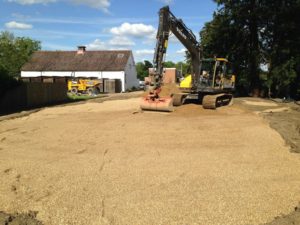 It’s a myth which needs exploding. Sports turf professionals do not hibernate in the winter. Nor do they spend their time playing darts or three card brag in the Mess Room. Sports turf professionals do an inordinate amount of work during the winter months, work which often makes the quality of the surfaces so much better in the main playing seasons.
It’s a myth which needs exploding. Sports turf professionals do not hibernate in the winter. Nor do they spend their time playing darts or three card brag in the Mess Room. Sports turf professionals do an inordinate amount of work during the winter months, work which often makes the quality of the surfaces so much better in the main playing seasons.
So, hours may be shorter because of reduced daylight but greenkeeping and groundsmen teams work hard all year round. Turf Matters spoke to two high profile sports turf professionals to highlight just what does get done in the winter. Master Greenkeeper Greg Evans consultants to several golf courses across the UK including Ealing and Fulwell Golf Clubs, and Andy Fogarty, Head Groundsman at Headlingley and ECB Groundsman of the Year.
Greg Evans MG
Turf Matters: At what point do you identify what you will be winter programme?
Greg Evans: Late spring early summer. You are thinking ahead working with the Board what is the priority but also you get a bit or residual because you always have a winter programme but you probably only achieve about 75% of that. There are always things which are a priority and there are always things which are secondary. You have the essential work and the desirable stuff.
I laugh because we are always working to a five year plan but we always seem to be on year one of the plan – you never get to the end of it. Every year there is another priority that crops up and that can be because of environmental conditions or new Board philosophies. It is always evolving and because there is residual every year you never get 100% of what you’d hoped for finished. There is always jobs which you postpone and which then come higher up the to-do list when you do your next programme.
TM: Do you differentiate between regular work which needs done and major construction work?
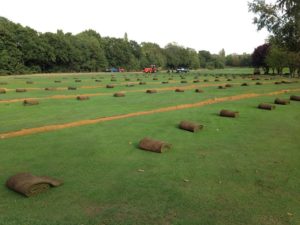 GE: I always try to have two teams going. One on projects and other focusing on the golf course. I try and give people a project. Make someone Project Manager and then keep them on that project until it is completed. We might give someone else the responsibility of the next one. When you are doing a project you do want to focus 100% and get it done.
GE: I always try to have two teams going. One on projects and other focusing on the golf course. I try and give people a project. Make someone Project Manager and then keep them on that project until it is completed. We might give someone else the responsibility of the next one. When you are doing a project you do want to focus 100% and get it done.
The big challenge, particularly for parkland courses, is the time of year. There is so much time you must spend clearing leaves from ditches and jobs like that. It really becomes a bit of a balancing act keeping everything going.
TM: There is a false impression that winter is the down time for sports turf professionals – the dart board gets used a little bit more often.
GE: I think the days of playing brag are gone. When I came into the industry it was definitely the down time but now expectation and intensity has gone through the roof so you’ve got to keep going. At Ealing we’ve just completed a major drainage project which we carried out all in-house, while at Fulwell we’ve have had one drainage project and we are on a tee project which has to be completed before Christmas as well as maintaining the course. There is definitely no down time.
TM: It is obviously weather dependant but do you usually have a timetable set for winter work?
GE: Your winter programme will include jobs for all weathers. For instance we’ve just come through two weeks of frost so that has meant that we’ve been able to do some tree work. If you’ve got a wet mild winter you might do out and do some drainage work. That is why you never get 100% of your objectives fulfilled. Weather will dictate so much and you will have your jobs and evolve those jobs and put the resources in to match the weather. You have to have flexibility in your approach.
TM: At what point do you feel that a project is too big for the in-house team and that you would need to bring in some contractors? Or do you try and do it in-house wherever possible?
GE: I think you plan ahead for that. Before you start the job you assess the staff’s capabilities and evaluate the machinery requirements. Before you do that there can be a combined approach too. When you are planning the project you are looking at what you’ve got and you might do 100% in-house, or you might go 90%-10% in-house-contractor. With in-house it is slower but I do feel you get quite a good job and it is more cost effective – probably less than 50% the cost of a contractor – but if you want to move on very quickly you do get a contractor to do it because you just don’t have the resources. It can depend upon what the club finances are and how ambitious they are.
TM: Do you have one winter project that you’ve done for which you’ve been particularly proud and which stands out in your mind?
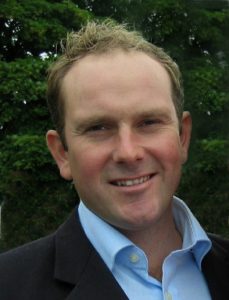 GE: Not really winter, funnily enough, but summer. At Ealing we did a chipping green in the summer of 2014. We hollow cored some greens and used the cores to create the rootzone for the green and it was a great success. What I stress to the guys is that every week you’ve got to make a difference. Whether that be planting a couple of trees or taking some trees out, or some drainage work. You have your winter programme and then you micro manage that down to a weekly schedule. At members’ clubs they want to see a difference. If they go out and don’t see anything happening for a couple of weeks they are going to be on your back. So keep making a difference. That has always been my philosophy in winter.
GE: Not really winter, funnily enough, but summer. At Ealing we did a chipping green in the summer of 2014. We hollow cored some greens and used the cores to create the rootzone for the green and it was a great success. What I stress to the guys is that every week you’ve got to make a difference. Whether that be planting a couple of trees or taking some trees out, or some drainage work. You have your winter programme and then you micro manage that down to a weekly schedule. At members’ clubs they want to see a difference. If they go out and don’t see anything happening for a couple of weeks they are going to be on your back. So keep making a difference. That has always been my philosophy in winter.
TM: Do you think weather patterns have changed and that may have impacted on the type of winter work that gets carried through?
GE: We’ve had a hard five years. This winter has actually been very good, cold and very dry, but the five previous winters have been incredibly wet which highlighted the drainage issues. Ealing Golf Club pre-five years ago we were out renovating bunkers but the last five years we’ve basically just been laying pipe. Conversely when you get a hot and dry summer it will highlight any deficiencies in your irrigation system. Weather will show the weakness of the golf course whether it be drainage, irrigation, turf quality and bring it to the forefront.
TM: Has machinery development in recent years assisted with winter programme work?
GE: Yes. You’re buying trenchers, you’re buying excavators, you’re buying lasers, not just cutting equipment. If you are going to do work in-house you have got to have the machinery to do it and often the hardest thing is to hire in the specialist kit – even a single thing like a tilting bucket for an excavator. You just can’t get them really. But this comes back to pre-planning and talking to your Board, getting your business plan right. You’ve got to make sure you’ve got the budget to do it and the machinery to do it too.
TM: What mistakes do you see being made with winter programme work?
GE: If the planning is not quite right they go into a job then don’t have the budget to finish so there are short cuts taken. Little things like not putting drainage or irrigation into a tee or shallowing off the rootzone just to save a thousand pounds. It will bite them back. You do see that sort of thing a lot but it is getting better.
I do believe that contractors have lifted construction jobs to a new level. This has meant that the in-house stuff has improved. Really good companies doing fantastic work and you think we can do that too and that is the standard that is being set. When you are working on an area you are boarding in and boarding out to avoid mess.
Personally I do love construction work. I get quite excited about it, I just love the challenges that it sets. I also find drainage incredibly interesting. You spend huge amounts of money on it but the members don’t ever get to see it. You get an issue with drainage and a member might talk about the wet fairways and keep on mentioning it. So you go in and solve the problem and you never get a congratulations or thanks from them – they just move on to another problem. Silence is quite a good thing. If they are not talking about an issue you’ve obviously done quite a good job. Drainage is costly, very labour intensive, dirty work and you never get any thanks!
Andy Fogarty
Turf Matters: How wide is the window you have to carry out your winter programme work?
Andy Fogarty: We don’t have much time because we have a lot of 20twenty cricket nowadays which reduced the available time and obviously a lot of Championship cricket as well. Our last fixture is on the 28th of September so we try to get all our work carried out by the second week in October simply because we don’t know what the weather is going to do. This year it has been really mild and you can grow grass but in the past years we’ve had a nightmare at the end of the season – bypassing autumn and straight into winter. So we get it done as early as possible but at the same time ensuring that we do it right. It is a very important time of the year and we make the most of it. We can be here up to nine o’clock in the evening still doing our reseeding work.
TM: What are or will be your winter projects over the next few years?
AF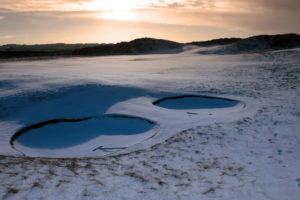 : We have four projects lined up for the next four years, starting this year. We’ve built a brand new net area which stretches from the edge of the cricket square to the edge of the Western Side. We’ve already got eight nets either side of the First Class pitches on the square and this new facility will give us another 10.
: We have four projects lined up for the next four years, starting this year. We’ve built a brand new net area which stretches from the edge of the cricket square to the edge of the Western Side. We’ve already got eight nets either side of the First Class pitches on the square and this new facility will give us another 10.
Work was carried out in the last week in September. The area was excavated, the same soil as used for the cricket square was brought in. We dug out to a depth of 15 inches, added a layer of stone then put the soil on top of that and reseeded and it sits nicely proud above the outfield. It is like a brand new square.
Next year, at the end of 2017 season, we will do exactly the same thing on the edge of the Eastern side which takes it more or less to the boundary. So in theory the square will go from one side of the boundary to the other side of the boundary, with another 10 nets on that.
We do have two indoor facilities at Headingley. One under the East Stand there are four nets on indoor lanes and we have an indoor school which is across St Michael’s Lane which is adjacent to the Cricket Ground.
In 2018 the outfield will be Koroed. We installed the outfield in 2006, and we have a few areas which require some work – a few dips which we need to address. Ideally I’d have Koroed it a little bit earlier and do it once every four or five years and then completely reseed again. It is similar to a football pitch and in an ideal world it should be done at least every two years.
TM: What’s the split between work in-house and that with contractors and what is the deciding factor?
AF: Anything which involves heavy plant we do tend to get contractors involved. Take the excavation for these new nets, we have contractors there because it involved excavating 250 tonne of soil and then replacing it. It was easier to get a contractor in to do this for us.
TM: What’s the biggest winter project you’ve undertaken at Headingley?
AF: Apart from the outfield, which was done by a contractor anyway, we had a training ground which we installed back in 2002 which was a net area with a 30 yard run up and floodlit, so that was one of the bigger things which we’ve done here.
TM: How have you found that machinery has improved and helped your cause over recent years?
AF: There is new equipment being developed year in, year out, and not just for cricket,for football, tennis, golf, rugby you name it. It makes our life 10 times, 100 times easier. When I first started in 1982 mopping up equipment like waterhogs didn’t exist. We didn’t have anything like that the water was just tipped from sheet to sheet until we got to the boundary rope. The tractors, the attachments spikers, scarifiers etc have all been updated and are fantastic pieces of equipment and they make our lives and our jobs 10 times easier.
TM: Have your found weather patterns changing in recent times?
AF: The weather has certainly been much more unpredictable. Years ago the winter almost started on the first day of November. You’d get frost and a little bit of snow and that carried on through December, to January and February time and then we might have some good weather in March. So the weather must have changed because it is so unpredictable now. Even in the summer time, when you get the downpours, it’s not just rain it is torrential.
We’ve seen those poor villages and towns being flooded and I can’t remember this sort of thing 30 years ago.
TM: Do you view your winter work with the same pride as you do the summer work when the matches are being played, or do you see it as two sides of the same coin?
AF: They are both just as important as the other. The work which is carried out in the winter time sets you up for the season ahead providing it is carried out properly and provided that you look after your pitches and maintain them once your grasses are established. You take care you take an eye on them for diseases. It is really important to help with preparing pitches in the summer time.
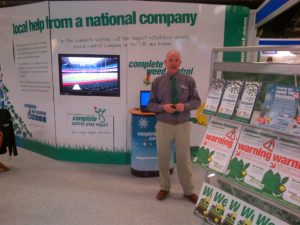 Alan Abel from Complete Weed Control gives Turf Managers his view ahead of 2017.
Alan Abel from Complete Weed Control gives Turf Managers his view ahead of 2017.
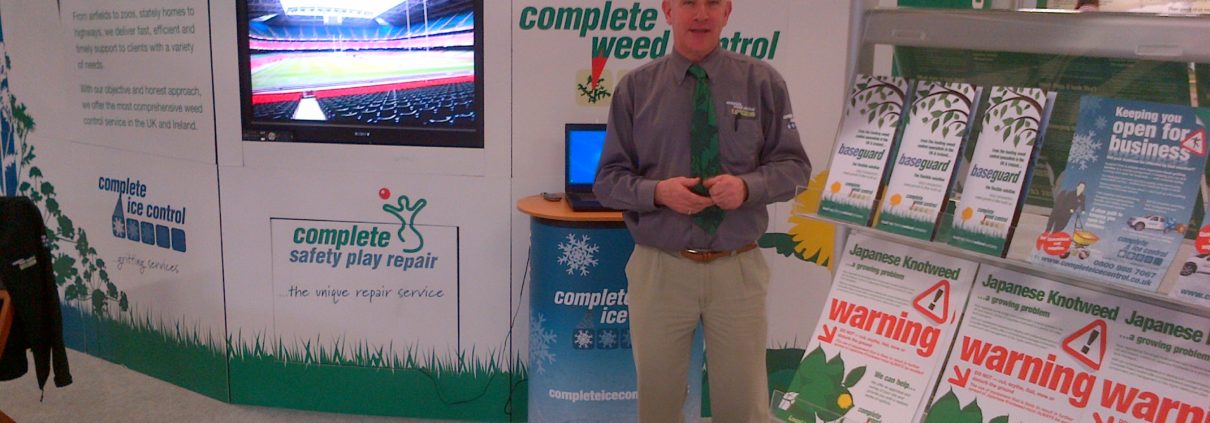
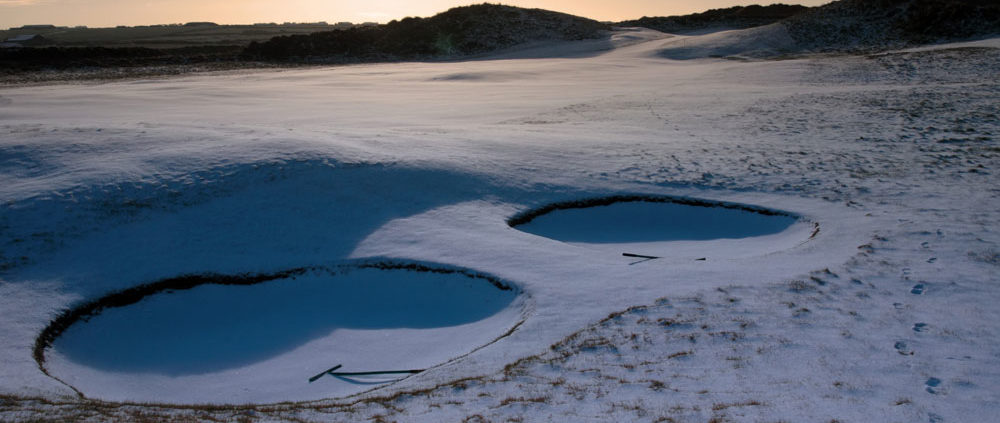
 It’s a myth which needs exploding. Sports turf professionals do not hibernate in the winter. Nor do they spend their time playing darts or three card brag in the Mess Room. Sports turf professionals do an inordinate amount of work during the winter months, work which often makes the quality of the surfaces so much better in the main playing seasons.
It’s a myth which needs exploding. Sports turf professionals do not hibernate in the winter. Nor do they spend their time playing darts or three card brag in the Mess Room. Sports turf professionals do an inordinate amount of work during the winter months, work which often makes the quality of the surfaces so much better in the main playing seasons. GE: I always try to have two teams going. One on projects and other focusing on the golf course. I try and give people a project. Make someone Project Manager and then keep them on that project until it is completed. We might give someone else the responsibility of the next one. When you are doing a project you do want to focus 100% and get it done.
GE: I always try to have two teams going. One on projects and other focusing on the golf course. I try and give people a project. Make someone Project Manager and then keep them on that project until it is completed. We might give someone else the responsibility of the next one. When you are doing a project you do want to focus 100% and get it done. GE: Not really winter, funnily enough, but summer. At Ealing we did a chipping green in the summer of 2014. We hollow cored some greens and used the cores to create the rootzone for the green and it was a great success. What I stress to the guys is that every week you’ve got to make a difference. Whether that be planting a couple of trees or taking some trees out, or some drainage work. You have your winter programme and then you micro manage that down to a weekly schedule. At members’ clubs they want to see a difference. If they go out and don’t see anything happening for a couple of weeks they are going to be on your back. So keep making a difference. That has always been my philosophy in winter.
GE: Not really winter, funnily enough, but summer. At Ealing we did a chipping green in the summer of 2014. We hollow cored some greens and used the cores to create the rootzone for the green and it was a great success. What I stress to the guys is that every week you’ve got to make a difference. Whether that be planting a couple of trees or taking some trees out, or some drainage work. You have your winter programme and then you micro manage that down to a weekly schedule. At members’ clubs they want to see a difference. If they go out and don’t see anything happening for a couple of weeks they are going to be on your back. So keep making a difference. That has always been my philosophy in winter. : We have four projects lined up for the next four years, starting this year. We’ve built a brand new net area which stretches from the edge of the cricket square to the edge of the Western Side. We’ve already got eight nets either side of the First Class pitches on the square and this new facility will give us another 10.
: We have four projects lined up for the next four years, starting this year. We’ve built a brand new net area which stretches from the edge of the cricket square to the edge of the Western Side. We’ve already got eight nets either side of the First Class pitches on the square and this new facility will give us another 10.






